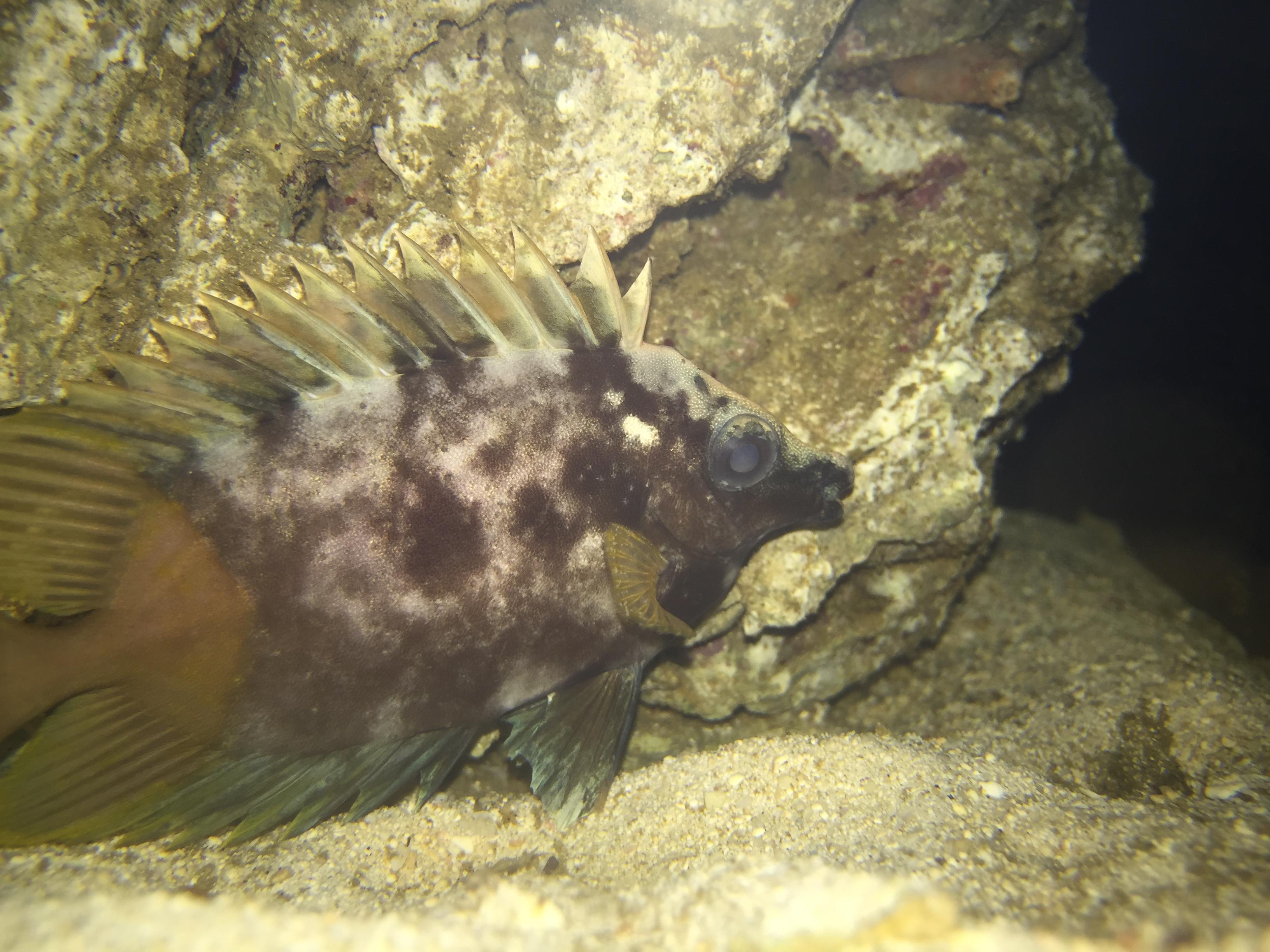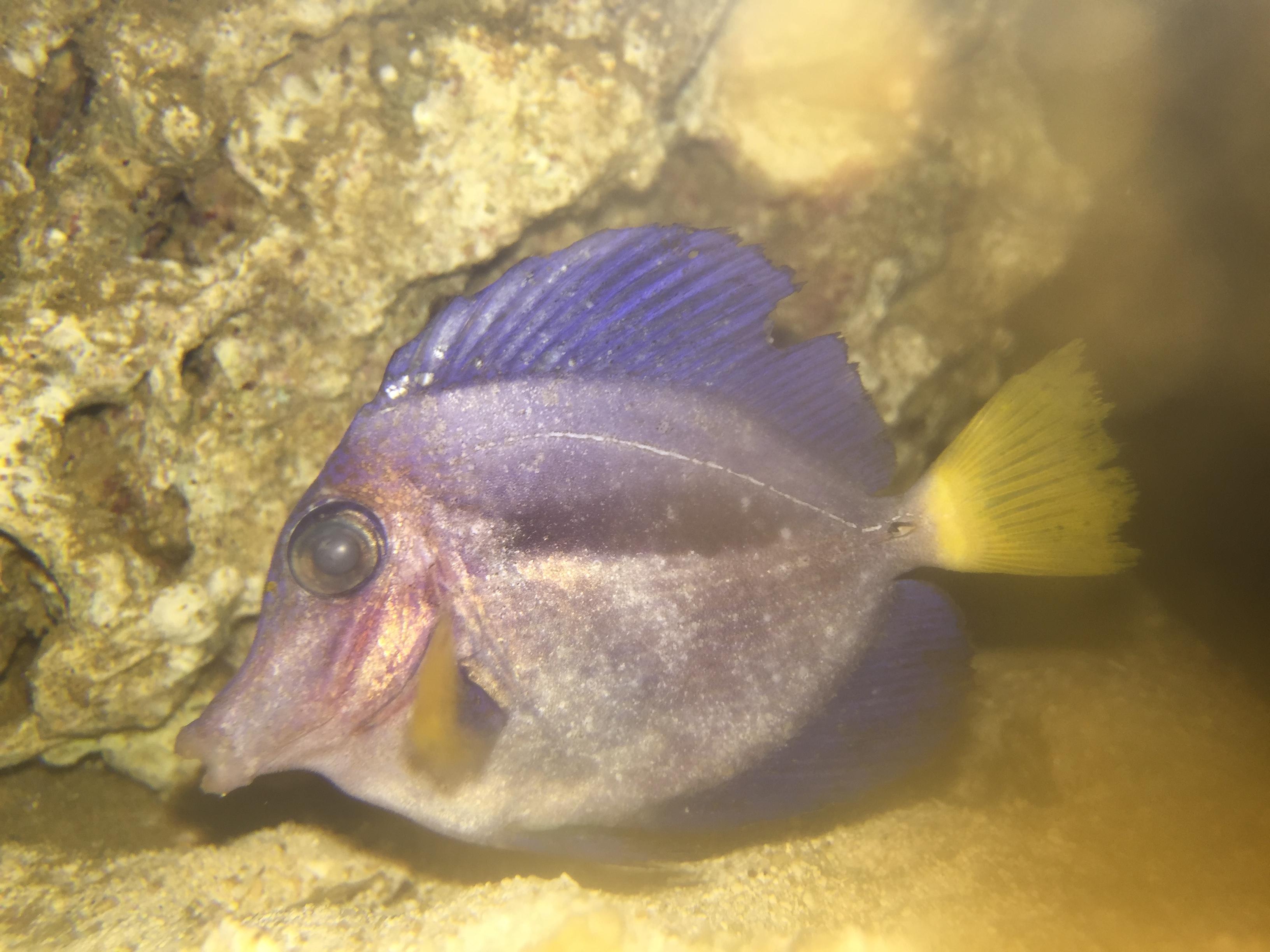Hello everyone,
Few days ago I had marine velvet outbreak that wiped half of my fish population.
I have Reefer 525 (140 gallons)
Salinity: 1.024
Ammonia: 0
Nitrite: 0
Nitrate: ~10
PO4: undetectable
the rest of the parameters (all, calc, mg,...) are within the healthy range
So I added the fish and everything was fine no signs and nothing at all. I decided to add a mccosker flasher wrasse. Quarantining it for 30 days showed no signs of any infections or diseases, so I added it to the display tank. Two days after adding it, my tangs showed what appeared to be marine ich. I read online that if the fish are healthy and eating and showing no stress, the marine ich will disappear (it will still infect the fish but it won't be lethal, and by time they will develop immunity). So I observed the fish and everything seemed normal, all are healthy, eating all the time and no other signs of stress except the spots on the tangs. Then, two days later when I woke up, I saw half of the fish dead. I read online and saw that it might be marine velvet. I checked the symptoms on the surviving fish, some are reaching the top or through the flow to grasp air, and they are breathing heavily. Fish are flashing, and they hate bright light, and so on. So I was sure that it was marine velvet. I added ruby reef rally and I only had one fish die after 2 hours of the treatment (i think it was already too late). Until now no other fish died *knock on wood*.
So my question is is ruby reed rally sufficient treatment for marine velvet. I saw the active ingredients, acriflavine and formalin and they seem to help relief from and treat the marine velvet respectively. I took that approach because most of the survivors are wrasses which are very difficult to catch in reef tank. My dosing program is as follows (days 1,2,3,5,7,11) I am still at day 3.
If it is sufficient to eliminate marine velvet, when can I start adding new fish to replace the dead fish. Some say keep the tank fallow for 76 days, but since I'm treating the tank, will this reduce the period even if fish are still in tank. Few told me that after treatment, observe the fish for few days and if they show no more symptoms you can add the new fish directly. Four of the fish still have spots but they decreased since adding Rally.
Finally, for future quarantining, is there any preventative measures against marine velvet or ich or any other parasites while in quarantine, other than copper or other toxic medications. The wrasse that had it showed no sign that it was a carrier, and until now only one out of the 6 wrasses showed few spots on its fin. It seems that the wrasse have some kind of immunity against marine velvet, especially after discussing my issue with fellow reefer, he also had marine velvet wipe out and only his wrasses survived it.
Sorry for the long post.
Your answers are much appreciated.
Few days ago I had marine velvet outbreak that wiped half of my fish population.
I have Reefer 525 (140 gallons)
Salinity: 1.024
Ammonia: 0
Nitrite: 0
Nitrate: ~10
PO4: undetectable
the rest of the parameters (all, calc, mg,...) are within the healthy range
So I added the fish and everything was fine no signs and nothing at all. I decided to add a mccosker flasher wrasse. Quarantining it for 30 days showed no signs of any infections or diseases, so I added it to the display tank. Two days after adding it, my tangs showed what appeared to be marine ich. I read online that if the fish are healthy and eating and showing no stress, the marine ich will disappear (it will still infect the fish but it won't be lethal, and by time they will develop immunity). So I observed the fish and everything seemed normal, all are healthy, eating all the time and no other signs of stress except the spots on the tangs. Then, two days later when I woke up, I saw half of the fish dead. I read online and saw that it might be marine velvet. I checked the symptoms on the surviving fish, some are reaching the top or through the flow to grasp air, and they are breathing heavily. Fish are flashing, and they hate bright light, and so on. So I was sure that it was marine velvet. I added ruby reef rally and I only had one fish die after 2 hours of the treatment (i think it was already too late). Until now no other fish died *knock on wood*.
So my question is is ruby reed rally sufficient treatment for marine velvet. I saw the active ingredients, acriflavine and formalin and they seem to help relief from and treat the marine velvet respectively. I took that approach because most of the survivors are wrasses which are very difficult to catch in reef tank. My dosing program is as follows (days 1,2,3,5,7,11) I am still at day 3.
If it is sufficient to eliminate marine velvet, when can I start adding new fish to replace the dead fish. Some say keep the tank fallow for 76 days, but since I'm treating the tank, will this reduce the period even if fish are still in tank. Few told me that after treatment, observe the fish for few days and if they show no more symptoms you can add the new fish directly. Four of the fish still have spots but they decreased since adding Rally.
Finally, for future quarantining, is there any preventative measures against marine velvet or ich or any other parasites while in quarantine, other than copper or other toxic medications. The wrasse that had it showed no sign that it was a carrier, and until now only one out of the 6 wrasses showed few spots on its fin. It seems that the wrasse have some kind of immunity against marine velvet, especially after discussing my issue with fellow reefer, he also had marine velvet wipe out and only his wrasses survived it.
Sorry for the long post.
Your answers are much appreciated.





















